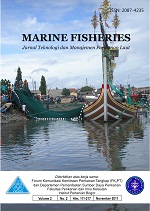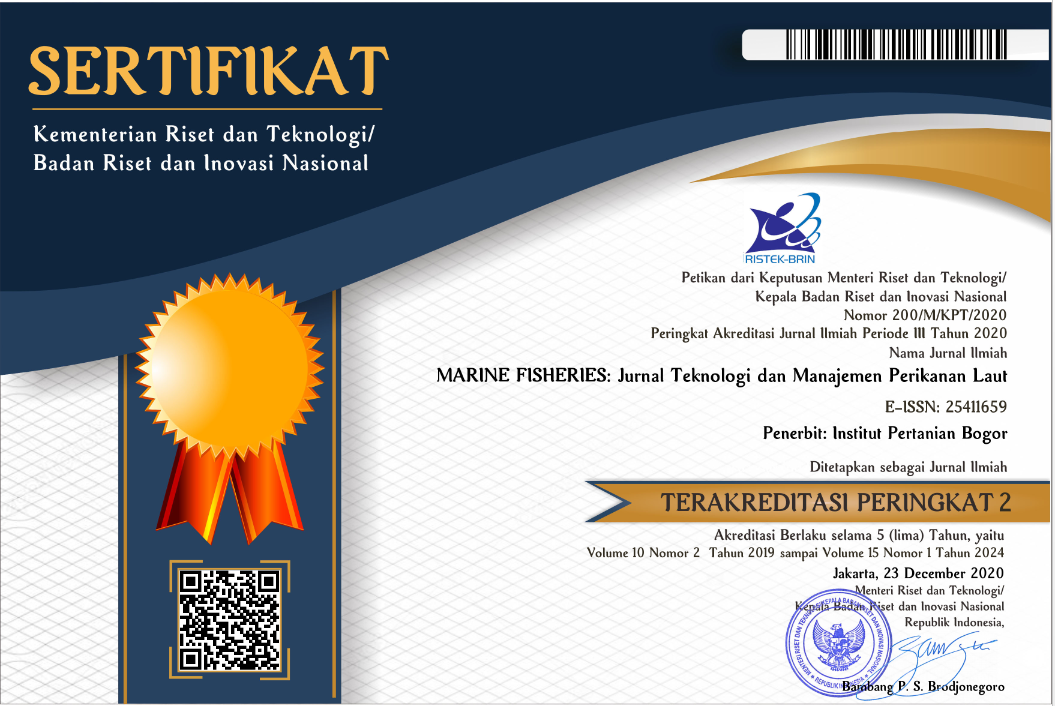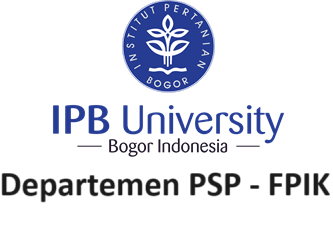ZONASI PEMANFAATAN KAWASAN PERIKANAN TANGKAP DI TELUK BANTEN (Zonation of Utilization Fishing Zone in Banten Bay)
Abstract
Utilization of fishing area in Banten Bay by various activities may cause multi sectors conflicts related to management of the bay. The integrated zone system in that area has not been established yet; therefore it is needed to be studied. The objectives of this study were to 1) determine fishing season and fishing ground; 2) determine indicators and criteria of fishing zone; 3) establish fishing zone. The study was conducted in four fish landing centers which are located in Karangantu, Terate, Wadas, and Kepuh from January to April 2010. Data were collected by surveying analyzed using the fishing season index analysis, relationship analysis between sea surface temperature, chlorophyll-a and fish abundance, and GIS analysis. Based on the results, it were revealed that 1) peak fishing season of pelagic fish was from November to January and demersal fish was from November to December; 2) the catches from fishing grounds surrounding Panjang island were anchovies, trevallies, squids, Indian mackerels, pony fishes, Fringescale sardinella; surrounding Pamujan besar island were threadfin bream, shrimps; and surrounding Tunda island were eastern little tuna, narrow barred king mackerels, black pomfret, red snapper, great trevally, scads, mullets, squids; 3) development indicators of fishing zone were (i) feasibility of fishing ground, (ii) compatibility of fishing gears with fishing grounds, (iii) possibility of conflicts, (iv) infrastructure, (v) carrying capacity of environment; 4) Banten bay water was divided into three fishing zones, they were (i) passive zone, (ii) passive and outboard motor zone, (iii) active and inboard motor zone.
Key words: fishing ground, fishing zone, utilization
Downloads
Author(s) who published in this journal agree to following terms:
- Author(s) must understand and agree that the copyright script in published owned by the Marine Fisheries Journal. The copyright includes reproducing and selling the manuscript to all parties.
- Everyone can cite every manuscript published in Marine Fisheries for educational purposes, with the author's name and the Marine Fisheries Journal on reference.









